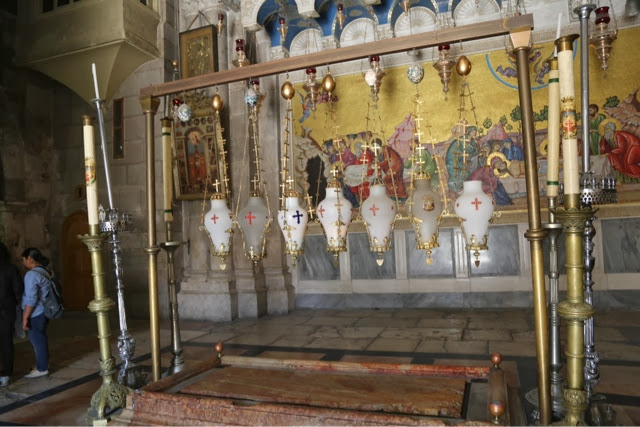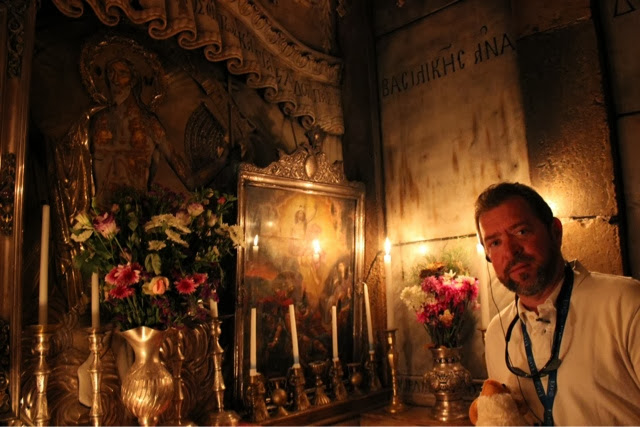We arrived in Jerash to find stunning ruins dating to the first, second, sixth and seventh centuries. This is the entry gate to the city. This ancient city boasts 6500 years of human occupation. It was hidden for centuries in buried sand before being excavated and restored over the last 70 years.
Here is the theater remnants. The second picture is of the musicians that treated us to some wonderful music while we sat in our seats.
Thomas from the top off the city looking back on the ruins. The ruins in the far left of this picture are of a temple to one of the Roman gods in the first century that was converted into a church in the 6th century. There were no less than 15 churches in Jerash in the 6th and 7th centuries and there are signs that this city was the center of the Eastern Orthodox Church for a period of time before it moved to Constantinople (modern day Istanbul.)
Eventually the church did move its center to Constantinople which then moved Jerash off the major trade route from Asia to Europe, leading to its decline and eventual abondonment. These ruins were discovered in the early 1900's and have 416 columns standing, the most of any ancient city.
These are the ruins I mentioned earlier that was a temple to a Roman god but then converted into a church. Most of the ruins were converted into homes and churches in the 6th and 7th century, after the fall of the Roman Empire.
These are the remains of the temple of Zeus.
This was known as the virgin fountain dedicated to the god Dionysus, the god of wine. The final photo is what is left of the original Roman road that went through the city.
The road from these ruins to our hotel took us over the Jabock river where Jacob wrestled with God before going on to reunite with his brother Esau. This stunning image is from just before sunset and was a great way to end our day.






















































